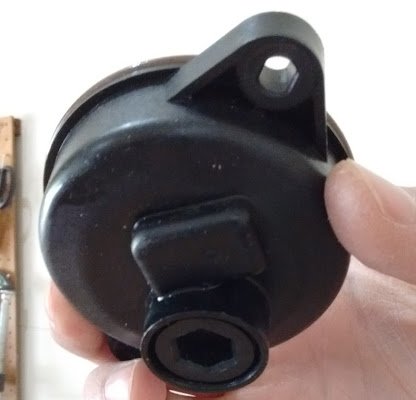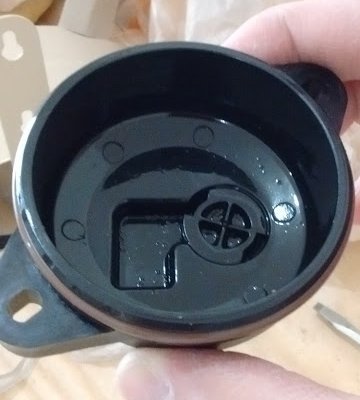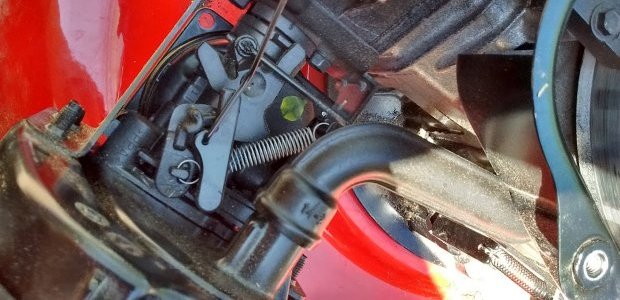Resurrecting My Lawn Mower
2016-03-27 do-it-yourself
This morning, I went to mow my lawn for the first time this year, and the lawn mower wouldn’t start. Mine is the standard Home Depot issue Yard Machines 21" lawn mower with a Briggs & Stratton 140cc engine (model 90000). I tried to pull the starter cord, but I couldn’t get a response from the engine. I was able to get the lawn mower running again by cleaning out the carburetor. Going into this, I didn’t know what a carburetor was or how to identify it; my purpose in writing this article is to spell out some of the details.
In order to diagnose the problem, I followed a couple of helpful articles from Family Handyman (Lawn Mower Won’t Start and How To Repair Small Engines). This is a common problem, and the most common culprit is the carburetor, which is responsible for mixing the fuel (gasoline) and air in the proportions that the engine needs. Often, some old gasoline or contaminant, left to sit for months, congeals in the carburetor and obstructs passage.
One of the articles recommends spraying some lubricant into the throat of the carburetor and then pulling the cord. The idea here is to make sure something flammable is getting through the carburetor (under normal circumstances, the flammable substance would be gas). If the engine starts, then the spark plug is working, successfully igniting what comes out of the carburetor. In that case, the lawn mower is failing to start because of a problem somewhere between the fuel tank and the carburetor’s output.
The carburetor takes air and fuel as inputs, so we can find it by looking at what’s connected to both the gas tank and the air filter. The fuel tank has a hose connected to the carburetor. The “throat” is where the carburetor takes in air. If you take off the air filter, there are two holes. The top hole takes air from the fan on the top of the motor, and the bottom hole leads into the carburetor. The bottom hole is the one we need. There’s a movable metal plate blocking access to the carburetor. This is called the choke valve; it controls whether air can flow into the carburetor.
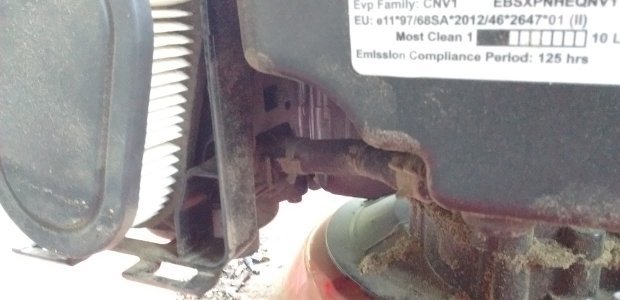
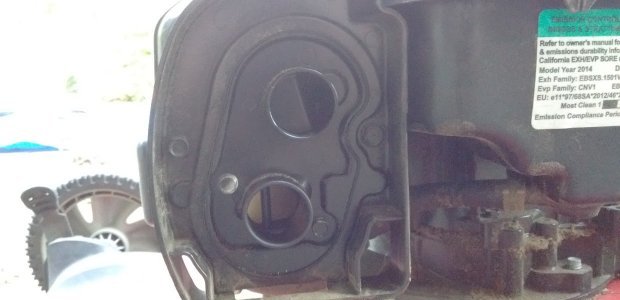
I tried spraying some WD-40 into the carburetor and then pulling the cord, but the motor did not start. Then I tried some GumOut “starting fluid”, and the motor started but immediately stopped, which means the spark plug ignition works, but fuel isn’t being supplied to the engine.
Now, the fuel could get stuck before reaching the carburetor, or it could get stuck within the carburetor. To see if fuel was reaching the carburetor, I disconnected the fuel line from the carburetor to see if it would drip gas. I actually siphoned most of the gas out of the tank before doing this, and then put a container under the hose so it would drip into that. It did. This showed that the fuel was getting from the tank to the carburetor, but it was getting stuck inside the carburetor.
Next, I had to take off the carburetor. There are three bolts holding the plastic cover on the engine; take those off to get access to the carburetor. Removing it is easier than it looks. I got some tips from a useful YouTube video. First, I took some pictures so I could see how things needed to be put back together. There are two thin metal rods (“linkages”) attached to the carburetor, but you need to detach the unit in order to have enough play to disconnect the two linkages. The carburetor is fastened to a couple of brackets, which are in turn fastened to the engine block. Take off the air filter and remove the four bolts behind it (see picture above). Take off the plate with the two air filter holes, and the carburetor can be eased out. Be warned that some gas is probably going to drip out the fuel intake barb.
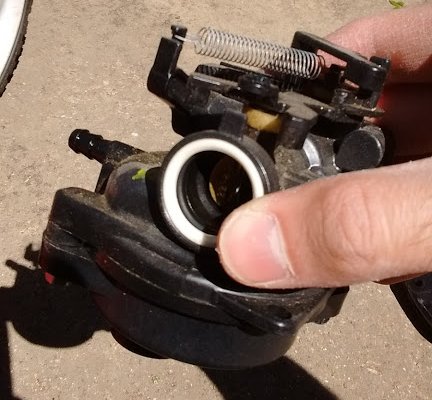

The bottom of the carburetor is a bowl where gas pools. With the carburetor off, loosen the two bolts on the bottom in order to take off the bowl. Even if some fuel dripped out of the fuel intake when you took off the carburetor, expect there to be additional fuel in the bowl. The bowl has an O-ring which makes it seal tightly to the body of the carburetor. I used a flathead screwdriver to pry the bowl off (and promptly spilled the gas that was inside – be careful).
The inside of my carburetor looked to be in good condition. I gave the whole thing a thorough spray with carburetor cleaner (this stuff, even though the directions said to use it while the engine was running), let it sit to dry for a few minutes, and then put it back together. The lawn mower started up on the first cord pull.
Note
There is also a drain plug in the center of the bowl, which can be used to empty out the gas that’s in there. The drain plug has to be operated with an allen wrench, probably 10mm (I tried 3/8" but it was not big enough). I didn’t use the drain plug. You may be able to bypass the disassembly of the carburetor by opening the drain plug and just jiggling the float. I’m not sure, though, because access is not good with the carburetor in place.
